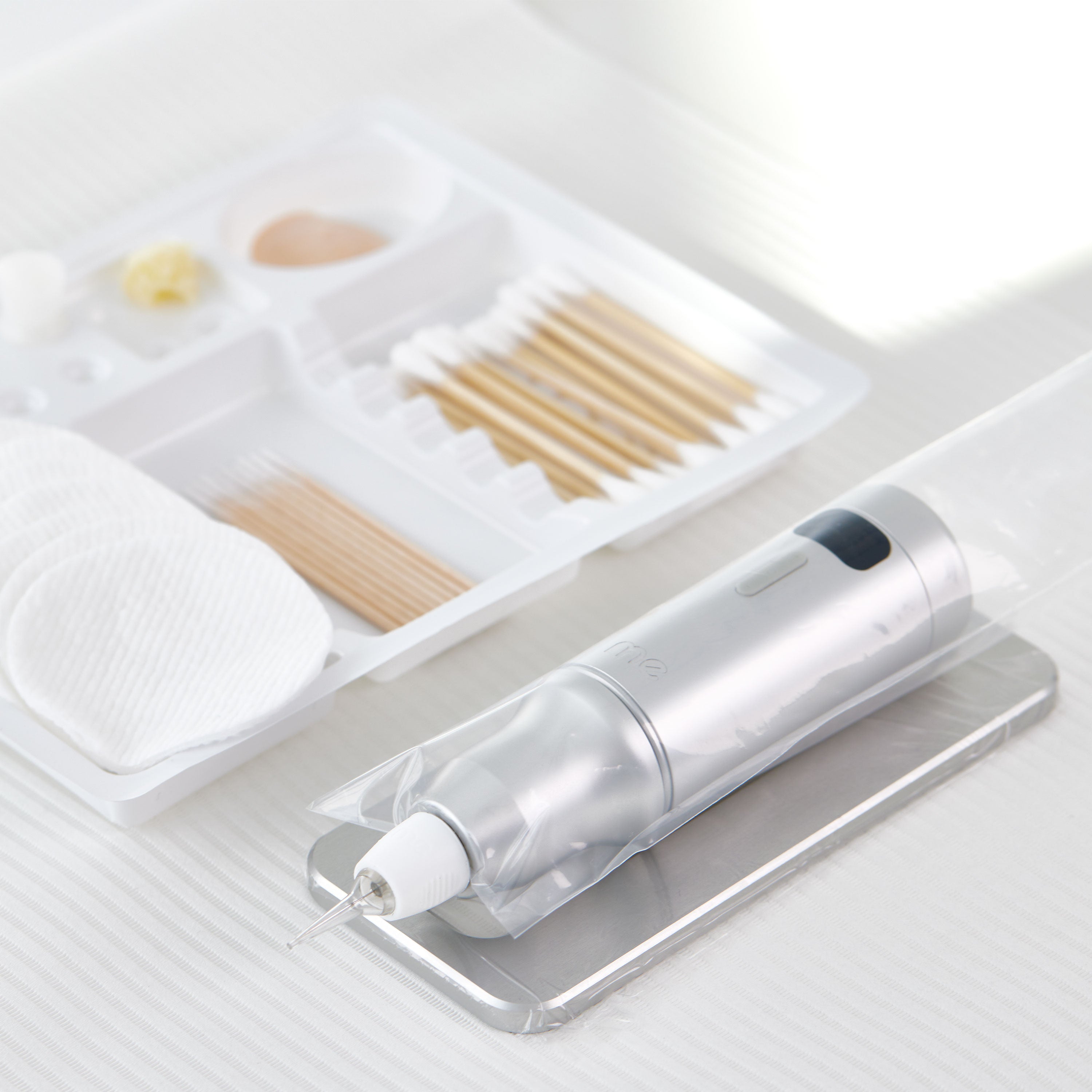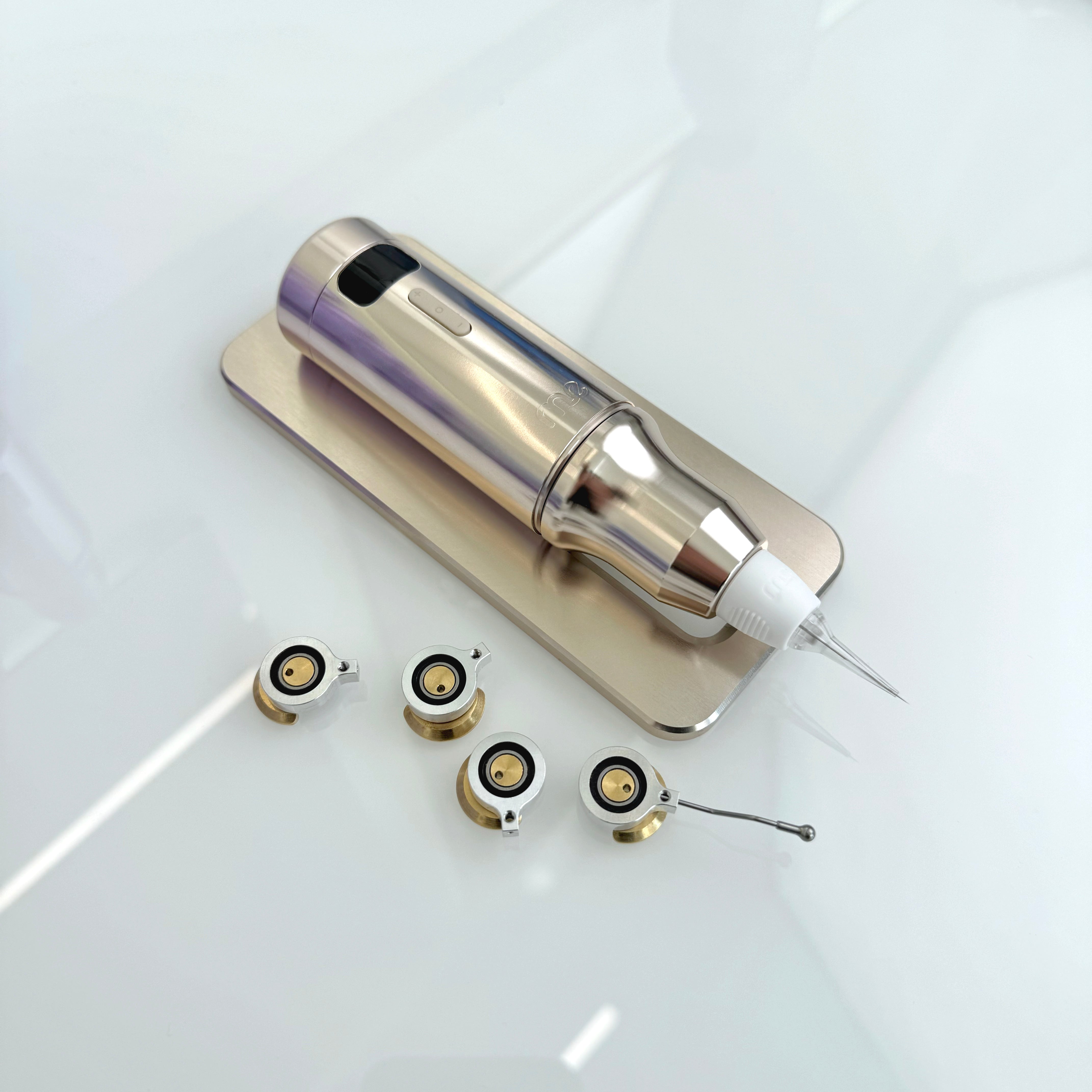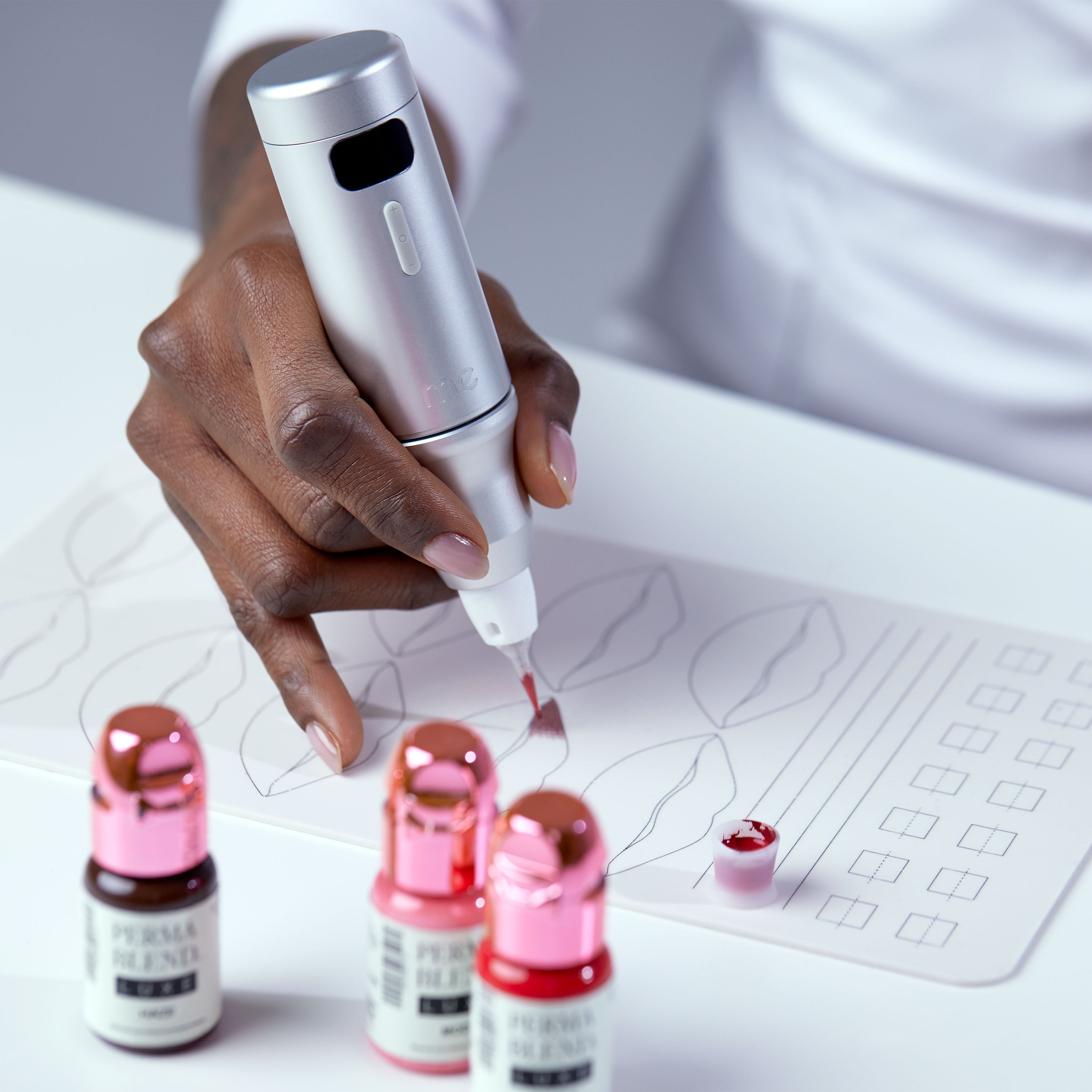The term "stroke" in the context of permanent makeup devices refers to the distance the needle travels up and down during device operation, defining the range of the needle's movement.
This is a variable parameter, and devices can feature strokes ranging from 2.2 mm to 5 mm. Understanding the dynamics of the stroke is essential, as it significantly influences the way pigment is deposited. Contrary to some misconceptions, a longer stroke does not mean deeper pigment placement; depth is actually controlled by the hand and pressure of the artist. However, a longer stroke does affect the force with which the needle hits the skin, comparable to a tightly pulled and released rubber band—the tighter the pull, the stronger the hit.
Mechanisms Controlling Needle Movement
- Pusher: This is a component of the mechanism that controls the needle's movement up and down. Depending on the design, pushers are key elements in direct drive devices, affecting the precision and stability of the needle's operation.
- Eccentric: In direct drive devices, the eccentric, part of the drive system, generates rotational motion and is directly connected to the needle. This direct connection contributes to greater precision and stability of the needle's motion, crucial during permanent makeup procedures.
- Direct Drive: This is a type of drive mechanism used in permanent makeup devices. In this system, the eccentric is directly connected to the needle, eliminating the need for additional components. This is considered a simpler and more direct solution, which can translate to better precision and stability of the needle's motion during procedures. The simplicity of the Direct Drive design ensures lower risk of failure and ease of maintenance and service, which is an additional advantage of this solution.
In direct drive devices, the eccentric does not change its size or shape depending on the needle's stroke. The eccentric remains constant and unchanging, regardless of whether the device has a smaller or larger needle stroke. What changes is the range of the eccentric's movement along its rotational axis. For a smaller stroke, the eccentric's movement will be limited to a shorter distance, and for a larger stroke, the movement will cover a greater distance. This allows devices to achieve different effects depending on the user's needs, yet the eccentric itself remains unchanged.
Why we chose a 3.5mm stroke in the ME device?
After extensive deliberation over the optimal stroke of the device and testing many options, we decided on the most versatile stroke of 3.5 mm. Thanks to the soft push mechanism and smooth motor operation, a stroke length of 3.5 mm performs well during every pigmentation procedure on any skin type, regardless of its thickness.
Stroke Length and Correct Needle Protrusion
Needle protrusion, the length of the needle that extends from the cartridge, is crucial for correct pigment deposition. It is important to understand the relationship between needle protrusion and the device's stroke. When working with a device with a 3.5 mm stroke, the needle should not exceed this length. Additionally, the density of the pigment significantly influences how the pigment flows along the needle and the final appearance of the pigmentation dot.
Proper needle protrusion setting is key for effective pigment application. The needle should be adjusted so that it can retract into the cartridge enough to pick up the right amount of pigment before being introduced under the skin. Ideally, the needle should protrude by half the length of the stroke—in the case of the ME device, this is 1.75 mm, although the needle can be extended further according to preferences, but attention must be paid to pigment distribution and its deposition in the skin.
A longer needle protrusion can result in the deposition of a smaller amount of pigment and a finer dot. Too much protrusion prevents the needle from effectively picking up pigment from the cartridge nozzle, which can lead to uneven pigmentation and skin irritation. Matching the protrusion to the consistency of the used pigment and ensuring its proper flow along the needle is crucial for the success of the permanent makeup procedure.








Leave a comment
All comments are moderated before being published.
This site is protected by hCaptcha and the hCaptcha Privacy Policy and Terms of Service apply.